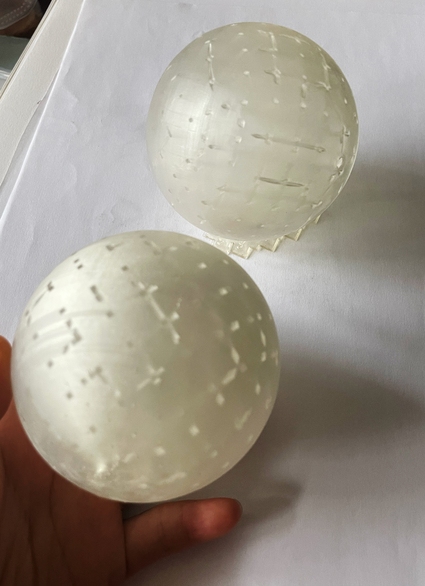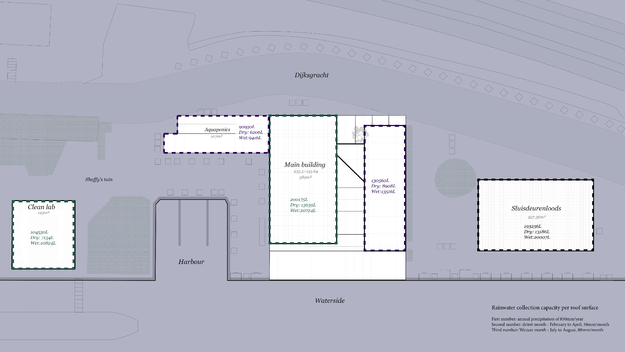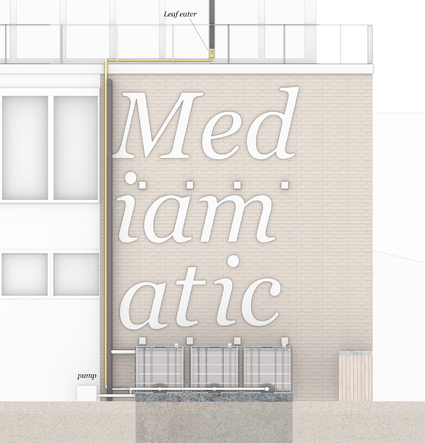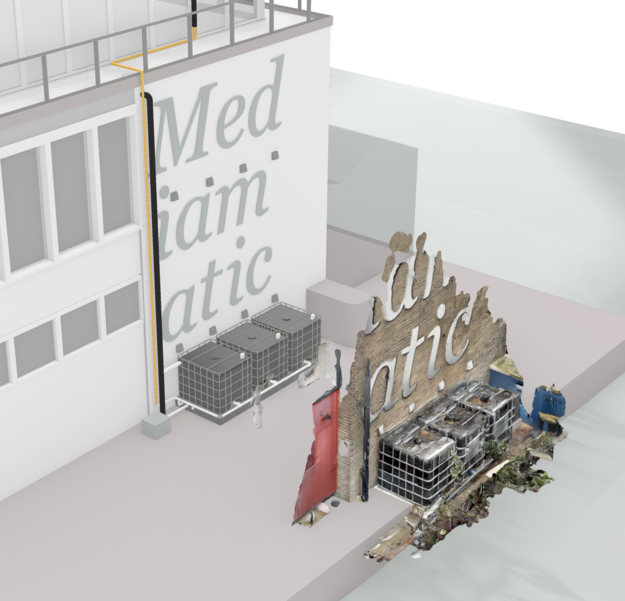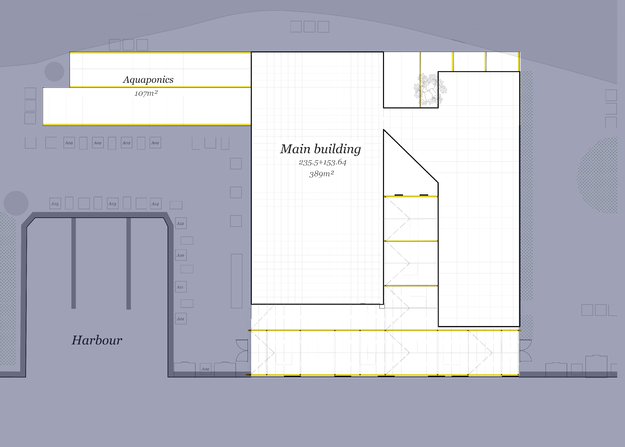Following the research on irrigating with canal water, a more general question appeared: How to build an ecological water management system for the exterior garden and interior greenhouse aquaponics?
The north-holland area has relatively stable precipitation all year; using these as a water resource and the heat generated from geothermal aquifers can offer the greenhouse plant an ideal living environment. Along with brackish water, we are researching and developing a rainwater harvesting system as a stable irrigation source. It can help improve the water quality, cleanse soil by leaching built-up salt deposits, and reduce the cost of tap water supply.
A regular rainwater harvesting system consists of three parts: the collection, the usage and the storage. We will integrate the existing roof drainage for the rainwater collection for the Grain of Salt project. The first step of the system is to build a collection/storage prototype.
This first prototype includes three IBC tanks placed at the corner of the west facade of the communal garden. This first system will use an existing concrete water storage. Along with this underground storage space, the system provides a 6000L capacity. One small part of the first flush system requires a hollowed waterproof ball to block the first flush water. This part has been 3D printed in a transparent resin in different thick layers (1.5mm/0.8mm). It will be inserted into the first flush chamber through the cleaning cap. Theoretically, the resin material is bio-degradable, so this set-up needs monitoring once a few months.
Following the image is a summary of the rainwater collection capacity around the site. Except for the total amount of water captured per year, the second and third figures in each row indicate the collection capacity during the driest and wettest months. It is made utilizing a straightforward formula:
Roof Area (m2) X Precipitation Amount (mm) = Amount Collected (litres).
After a few try-outs, we discovered that the first flush system is unnecessary for a smaller-scale system like this one. So, we simplified the piping system with a direct connection to the roof drainage. A leaf eater will filter the rainwater from the second floor's terrace and continue going down with a pipe attached to the metal drainage.
-----
This article is constantly updated
Last modification: 14 December 2023
Reference:

